FiiO sure is fast this year with one release after another. This time it is the E10, an USB DAC with a headphone amp. Here are a few things that need to be clarify before we go into the actual impression:
First, E10, like E9, is not designed to be portable as there is no battery inside. At most, it is transportable. For those who own a NuForce uDAC before, E10 belongs to the same class of product. You should think of it as a high quality external soundcard dedicated to drive headphone (though it can be connected to powered speaker as well via its line-out socket).
Second, E10 is a pure USB DAC that has a headphone amp section. It has no line-in so you can’t connect it to your DAP. USB is all it takes so you should use it with PC, well, perhaps some other devices that has an USB host function as well. If you have no idea what is a USB host function, don’t worry – just understand E10 is supposed to be used with PC and you will be fine.
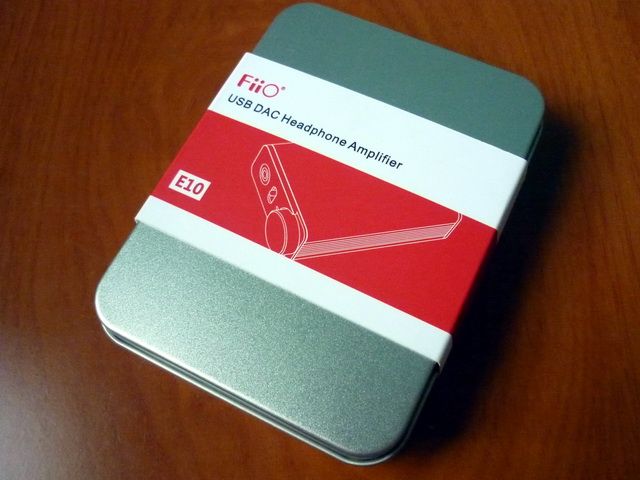
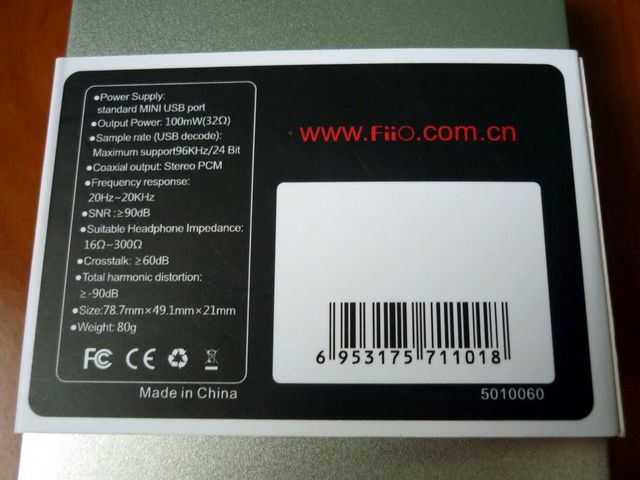
SPEC
Power Supply: via USB port
Output Power: 100mW (32ohm)
Sampling Rate: 24bit / 96kHz (Max)
Coaxial Output: Stereo PCM
Frequency Response: 20Hz ~ 20kHz
SNR ≥ 90dB
Headphone Impedance Range: 16ohm ~ 300ohm
Crosstalk ≥ 60dB
Size: 78.7mm x 49.1mm x 21mm
Weight: 80g
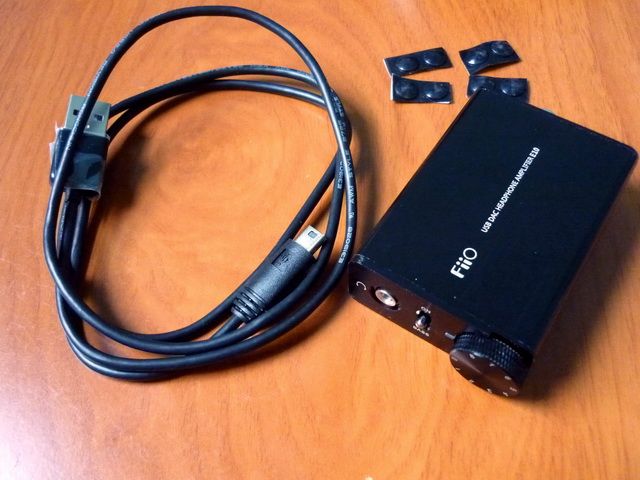
Build Quality and Accessories
Build quality is already pretty solid on FiiO, E10 is no exception. The surprising part is the size of E10. It is barely bigger than a Nuforce uDAC and even smaller than E11 in footprint (though thicker). In fact, it comes in a metal tin case that resembles the one from E11 and you won’t have guessed it can fit the whole E10 inside, plus an USB cable and some rubber foot sticker.
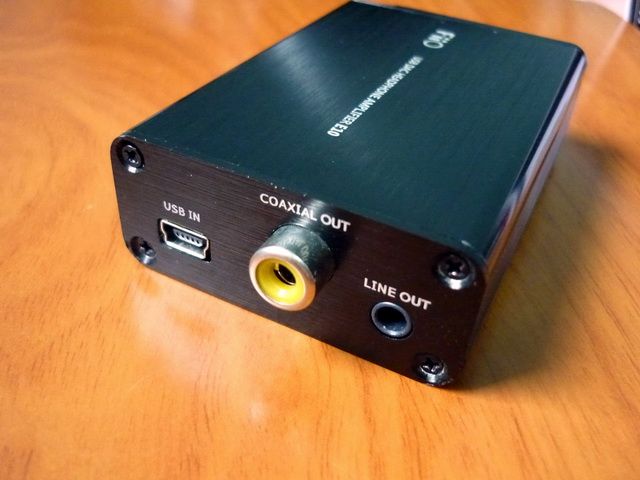
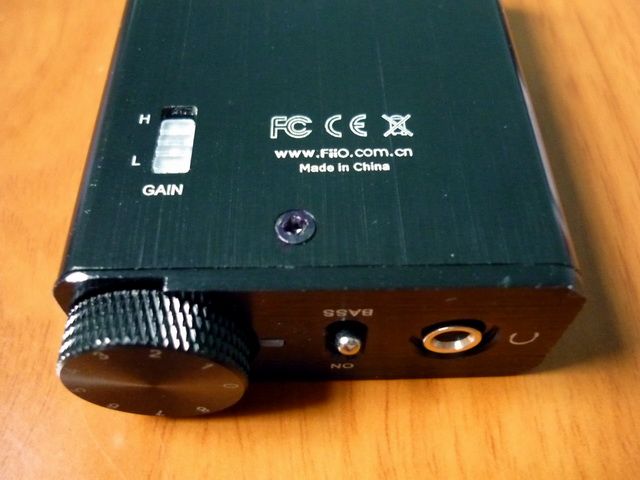
Belly of the beast. The high / low gain was marked wrongly on my sample, but the final version should have that problem
On the front, you will find the 3.5mm stereo headphone socket, a hardware bass boost switch and the volume pot with a blue indicator LED next to it. The volume pot is mounted semi-recessive into the face plate (which, to take a small credit, is part of my suggestion to FiiO during prototyping). On the back, there are the USB input, coax output and the 3.5mm stereo line-out. On the belly of E10 is a small gain switch for high and low gain selection. According the RMAA, the difference between the two gains is roughly 7dB.
Hissing and imbalance
Using a Shure SE530 (which is quite hiss prone), no hiss is detected on low gain at max volume. Some fainted hiss is detected on high gain when volume is over 2/3 of the pot (that’s about 5 / 8 on the dial) when no music is playing. But since it is impossible to use a high sensitivity IEM like the SE530 over 1.5 / 8 on the dial when music is playing (which is crazily loud), hissing can be considered as none existence in practice.
No obvious imbalance is detected on either high or low gain during normal / low listening using the SE530, which is quite good to say the least.
Gain and Efficiency
As mentioned, the low and high gain is about 7dB apart as indicated by RMAA. In real life, the volume pot can hardly go pass 3 / 8 even with 150 ohm IEM (i.e. RE262) in low gain. On high gain, HifiMan HE300 (50ohm / 93dB) is already rocking out real loud on 4 / 8. There simply isn’t one headphone in my collection that can push the volume pot over half of what it is capable.
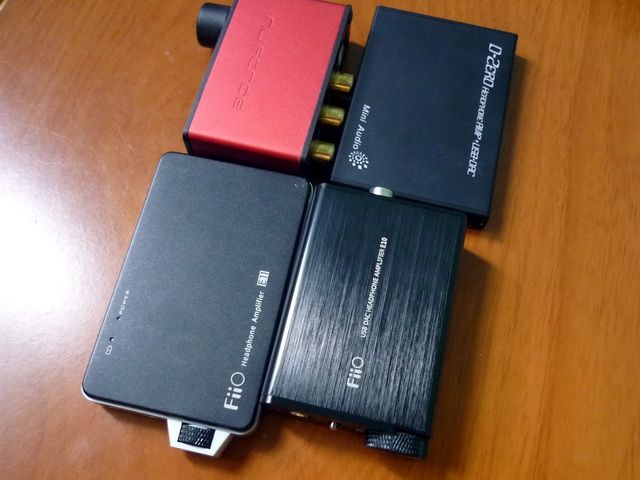
Size comparison: NuForce uDAC (top left), iBasso D-zero (top right), FiiO E11 (bottom left), E10 (bottom right).
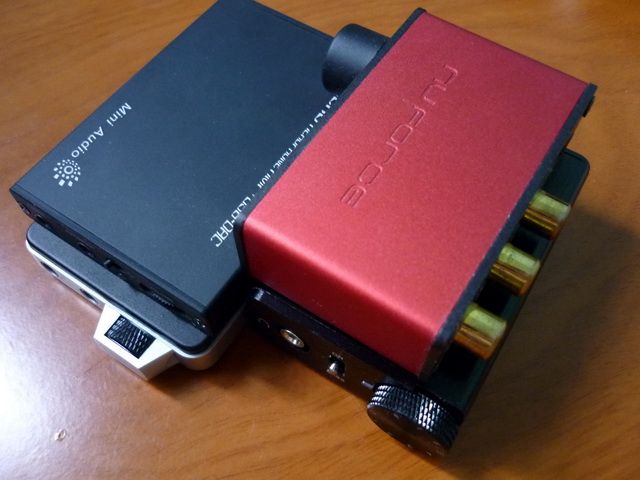
Sound Quality and EQ
Let talk about EQ first, as it is the simplest and required no comparison. If you take a look at the FR curve, you will know the bass boost is only around 3dB and 500Hz down. It should be the same bass boost circuit design for most of other FiiO’s product. As far as bass is concerned, the boosting is really mild. If you are using balanced armature IEM, the bass boost will sound more significant. For full sized and dynamic based IEM, it sounds more like an added layer of warmth in the bottom end rather than chest pounding rumble.
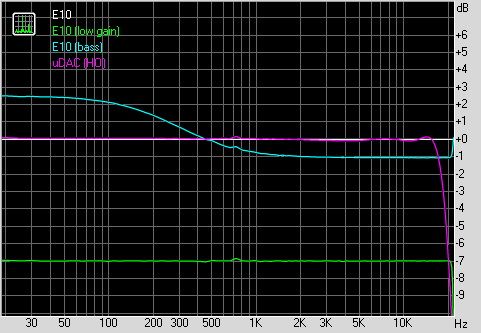
Using E10 high gain as reference. E10 low gain has been adjusted to -7dB according to RMAA.
Now let compares the line-out between E10, uDAC, E7, and the new iBasso D-zero all feeding into Meier Audio’s Corda 3MOVE, driving a pair of HifiMan RE262. First thing to note is that E10, E7 and D-zero all use the same structure of DAC section – that is combing the well received Wolfson WM8740 DAC with a USB receiver chip. In the case of E7 and D-zero, the USB chip is TI PCM270x series that only supports sampling rate up to 16bit / 48kHz. E10 uses the Tenor TE7022L USB chip that gives it a higher sampling rate at 24bit / 96kHz. The original uDAC that I current have user an ESS Sabre DAC but only supports up to 16bit / 48kHz as well (though the uDAC2 supports up to 24bit / 96kHz like E10). As far as bitrate and sampling rate are concerned, you shouldn’t really need to worry if you are just a regular, average user. They are more for future compatibility as most commercial music is still encoded using the 16bit / 44.1kHz standard.
Out of the four, E10’s line-out sounds the best, followed by D-zero, uDAC, and E7 in the last place. While D-zero and uDAC’s line-out both have wider soundstage than E10, they both lacks texture in the mid and low -especially on uDAC as it is also the brightest among the four. E7 on the other hand sounds more compressed and warm when compared to the other three. While E10 soundstage is only bigger than E7 among the four, it has much better layer and image so it doesn’t sound compressed when compared to the wider sounding uDAC and D-zero.
===
For mainly a desktop solution, how does E10’s headphone-out compared to uDAC’s, FiiO’s own E7+E9 combo and Über Muzik Tiny Tube DAC when driving RE262?
First, uDAC’s headphone-out really benefits from its wider soundstage and so it does sound more open than E10. It also has better bass control with a harder hit. But the upper treble, especially a lot of the sparkle are missing from uDAC. A look at the RMAA result reveals that there is a rather shape roll off on uDAC when it goes over 16~17kHz. Though uDAC headphone-out is decent on its own, a quick A/Bing instantly reveals that E10 is noticeably more detail. While it might have a softer bass hit and not quite-as-wide a soundstage (but by not mean bad on itself), I still prefer E10 as it is more balance overall.
Second, E7+E9 combo is actually quite close in performance to E10 when driving RE262. While E10 sounds a little more spacious, crisp on the top and better texture on the mid, E7+E9 has tighter bass and really smooth presentation. But the difference is small enough not to say which has a distinct advantage over the other, at least not when they are driving RE262. The real eye opener is feeding E10’s lineout to E9 – the result is clearly better than E7+E9 or E10 by itself. It is spacious, texture and powerful. That being said, it is obvious E7 is a slightly lesser DAC than E10 while E10’s amp section doesn’t quite have the control and power of E9.
Third, Tiny Tube DAC is based on the same TPA6120 found on E9’s amp section, so it too has quite a lot of power behinds it. The interesting bit about the Tiny Tube DAC is that it doesn’t really sound like a tube gear. It is rather clean, bright and highly detail, certainly the most detail sounding among the four and opposite to the classic FiiO warm sound. As far as detail and soundstage are concerned, Tiny Tube DAC is definitely ahead. But it is also less texture and pickier on synergy. Overall I’ll still prefer Tiny Tube DAC just a little over E7+E9 and E10, but the same can’t be said when E9 is pairing with E10. Do note than both E9 and Tiny Tube DAC has rather high output impedance so low impedance IEM (especially BA based IEM) might sound more accurate / linear on the E10.
===
Since E10 uses the same opamp (AD8397) as E11, how does they compare? I feed the line-out from E10 to E11 and A/B'ed them. E10's headphone-out is noticebly brighter and cripier than E11, but not quite as hard hitting on the bass. Overall, the sound signature of the two are similar even though E10 amp circuit is not the three channels design as in E11. Synergy wise, E10 should be easier than E11 on pairing since it is niether particularly bright or dark.
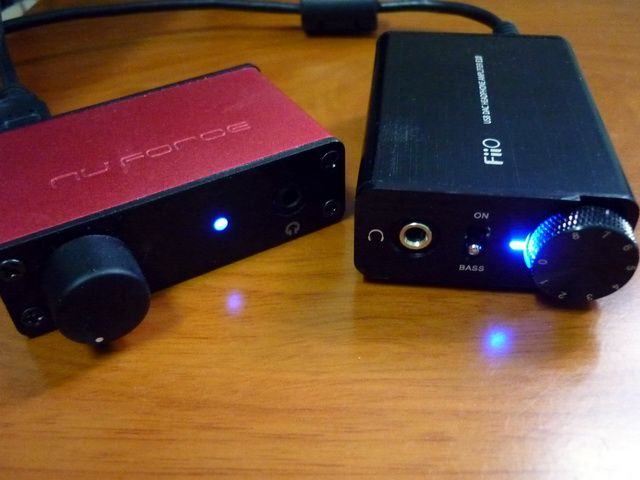
Conclusion
As far as an $80 USB DAC goes, E10 is a killer. The $99 uDAC (which I thought to be quite good a year ago) isn’t much of a competition. My recently acquired $109 D-zero from iBasso is able to keep up on the DAC performance, but lose out on the amp section (of course not quite a fair comparison since D-zero is meant to be portable). Though E7 is little more expensive, it really can’t compete with E10 besides portability. While I don’t think E10 can really beat out DAC that is twice its price, what it does is still very admirable – to say the least. All and all, E10 is a well rounded small USB DAC with a good bang for the bucks factor.





